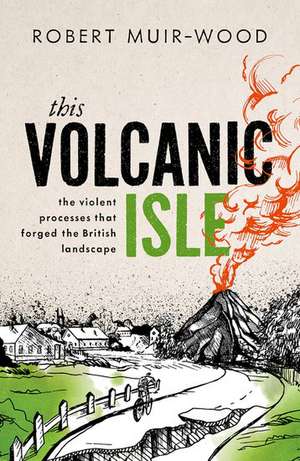This Volcanic Isle: The Violent Processes that forged the British Landscape
Autor Robert Muir-Wooden Limba Engleză Hardback – 23 mai 2024
Preț: 109.52 lei
Preț vechi: 128.76 lei
-15% Nou
Puncte Express: 164
Preț estimativ în valută:
20.96€ • 21.93$ • 17.41£
20.96€ • 21.93$ • 17.41£
Carte disponibilă
Livrare economică 01-07 martie
Livrare express 26 februarie-04 martie pentru 53.36 lei
Preluare comenzi: 021 569.72.76
Specificații
ISBN-13: 9780198871620
ISBN-10: 0198871627
Pagini: 368
Ilustrații: 61 black and white figures
Dimensiuni: 160 x 240 x 32 mm
Greutate: 0.59 kg
Editura: OUP OXFORD
Colecția OUP Oxford
Locul publicării:Oxford, United Kingdom
ISBN-10: 0198871627
Pagini: 368
Ilustrații: 61 black and white figures
Dimensiuni: 160 x 240 x 32 mm
Greutate: 0.59 kg
Editura: OUP OXFORD
Colecția OUP Oxford
Locul publicării:Oxford, United Kingdom
Recenzii
This Volcanic Isle masterfully unpeels the skin of the British landscape to reveal a torrid and turbulent past. It is land famed for its geological antiquity, and yet in journeying through its last 66 million years it is the enduring youthfulness of tectonic, seismic and volcanic actions that constantly surprises and enthrals. Local places and familiar vistas are interwoven with planetary processes in a beautifully written account of how our appreciation of the natural world around us can be immeasurably enhanced by viewing it through rock-tinted spectacles.
Robert Muir-Wood's voyage through the past 66 million years of the making of the British landscape has biblical-level drama on almost every other page... What a geological genesis Britain had! ... I defy anyone to close its covers without their interest in Britain's rocky nature being piqued.
For the most part, Britain exists in a state of tectonic tranquility ... but it was not always thus, as this entertaining new book makes clear. And the evidence of this green and pleasant land's violent past is all around us - you just need to know where ... to look.
Robert Muir-Wood's voyage through the past 66 million years of the making of the British landscape has biblical-level drama on almost every other page... What a geological genesis Britain had! ... I defy anyone to close its covers without their interest in Britain's rocky nature being piqued.
For the most part, Britain exists in a state of tectonic tranquility ... but it was not always thus, as this entertaining new book makes clear. And the evidence of this green and pleasant land's violent past is all around us - you just need to know where ... to look.
Notă biografică
Robert Muir-Wood is head of research at the world's largest catastrophe modelling company, RMS, and a visiting professor at UCL's Institute for Risk and Disaster Reduction. He was a research fellow at the University of Cambridge, and since 1995 has worked commercially in catastrophe risk science and modelling. He was lead author on two IPCC reports. Muir-Wood's work primarily focuses on the history of science, seismotectonics, and probability risk assessment. He is the author of several books including The Dark Side of the Earth: the battle for the Earth Sciences 1800-1980 (1985), and The Cure for Catastrophe: How We Can Stop Manufacturing Natural Disasters (2016).
